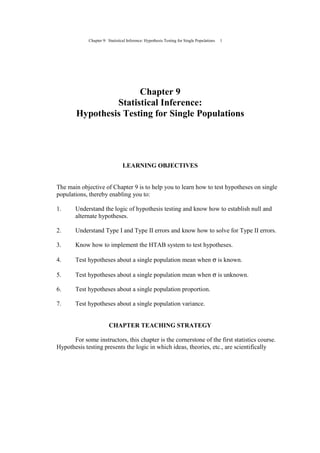This document provides an outline and overview of Chapter 9 from a statistics textbook. The chapter covers hypothesis testing for single populations, including:
- Establishing null and alternative hypotheses
- Understanding Type I and Type II errors
- Testing hypotheses about single population means when the standard deviation is known or unknown
- Testing hypotheses about single population proportions and variances
- Solving for Type II errors
The chapter teaches students how to implement the HTAB (Hypothesis, Test Statistic, Accept/Reject regions, Boundaries, Conclusion) system to scientifically test hypotheses using statistical techniques like z-tests and t-tests. Key concepts covered include one-tailed and two-tailed tests, critical values, p







































